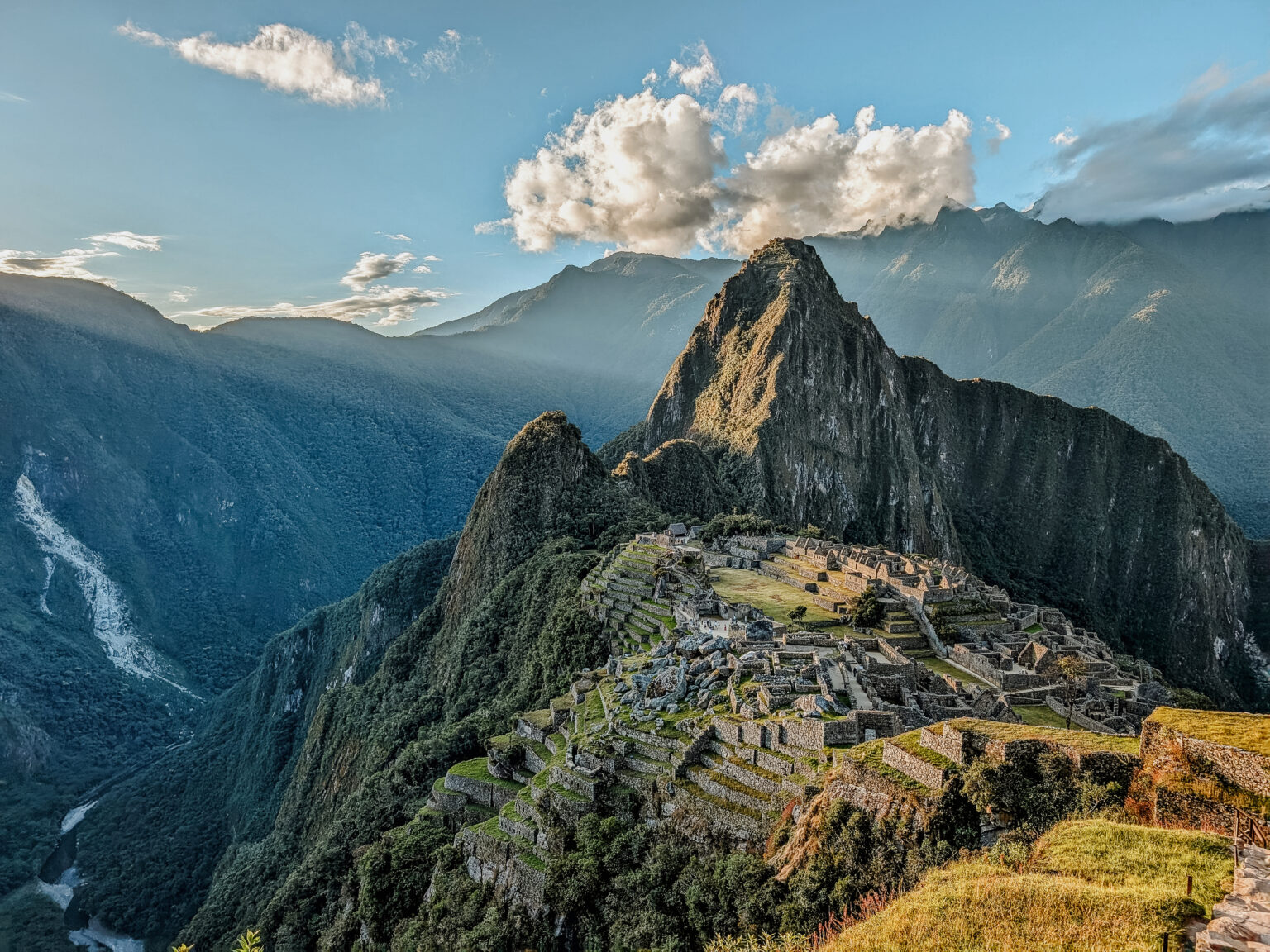Machu Picchu, outside of Cusco, Peru, was the religious center of the Incan empire and, today, it is the most visited site in South America. It was built in the 15th century, abandoned during the conquest of the Spaniards in the region (although the Spaniards never found the site), and rediscovered in 1911 by some local people who then notified Hiram Bingham, an American explorer. Today, it is known for its incredible destination nestled in the steep Andes mountains, its incredible stone architecture, and its representation of the ingenious engineering and technological knowledge of the Incan empire. It is a World Wonder that can be visited from Cusco, Peru in a variety of ways, including the Classic Inca Trail, a 1-day tour, and the Short Inca Trail.
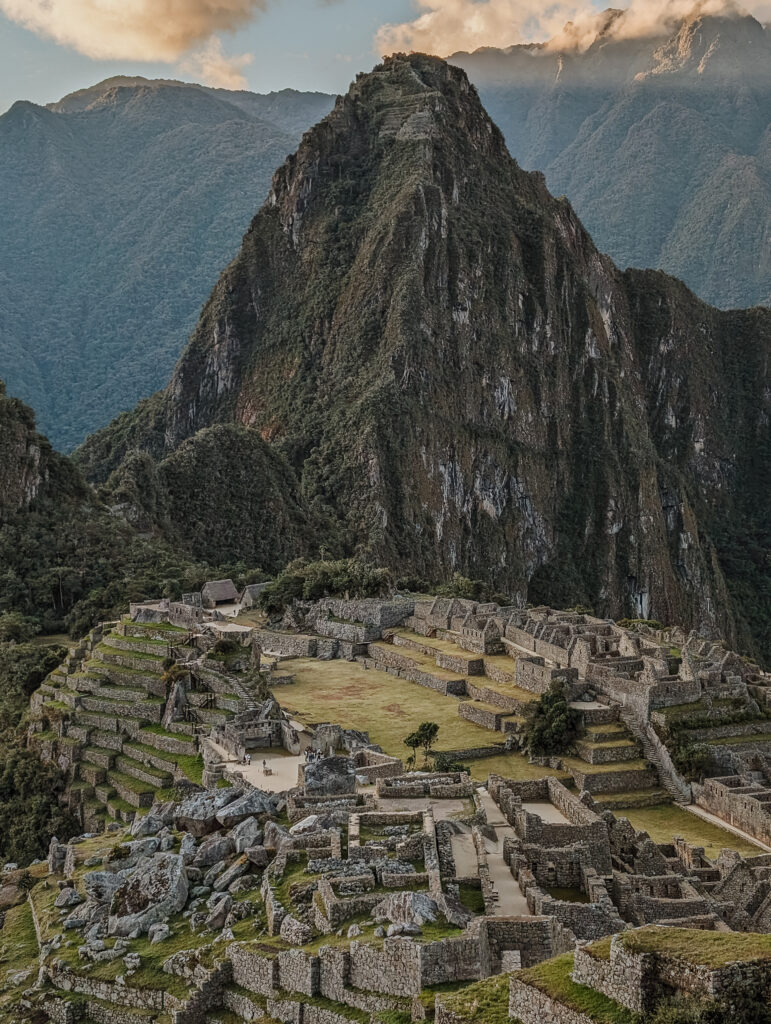
There are three ways to visit Machu Picchu today. The first option is the most traditional hike to visit the site but we will focus on the other alternatives during the rest of this article.
- Classic Inca Trail – This 4-day/3-night hike with camping follows the original and traditional Inca trail. This is the most popular trek and is often reserved months in advance. As soon as you know your travel dates, check the availability of this hike if it interests you.
- 1-Day Tour – The 1-day tour is the quickest and most popular way to visit the site. This can be done as an independent experience or in conjunction with an alternative trek (such as Lares or Salkantay). While popular, it may not be the best option as you may not have enough time to truly appreciate this magical site and may be battling some crowds. You can read more about this option below and the best way to visit Machu Picchu in just one day.
- Short Inca Trail – This 2-day/1-night hike can be done with either camping or a hotel. This can be done as an independent trek or in conjunction with an alternative trek (such as Lares or Salkantay). The structure of this trek allows you to visit Machu Picchu with much fewer crowds and gives you time to take in the entire experience. You can read more about this option below and why we recommend it so much.
Visiting Machu Picchu in One Day
It is possible to visit Machu Picchu in one day, but if you have time, it is recommended to take two days to truly take in this beautiful World Wonder.
With a one-day visit, you will wake up early in the morning in Cusco and get picked up from your hotel. From here, you will be driven to Ollantaytambo to take the train to Aguas Calientes, Aguas Calientes, the town at the base of Machu Picchu. Finally, you will take a bus up to Machu Picchu and get a tour of this archaeological site. You follow a circuit to visit a variety of areas within the site and learn about the Incan population that lived and visited this magical place.
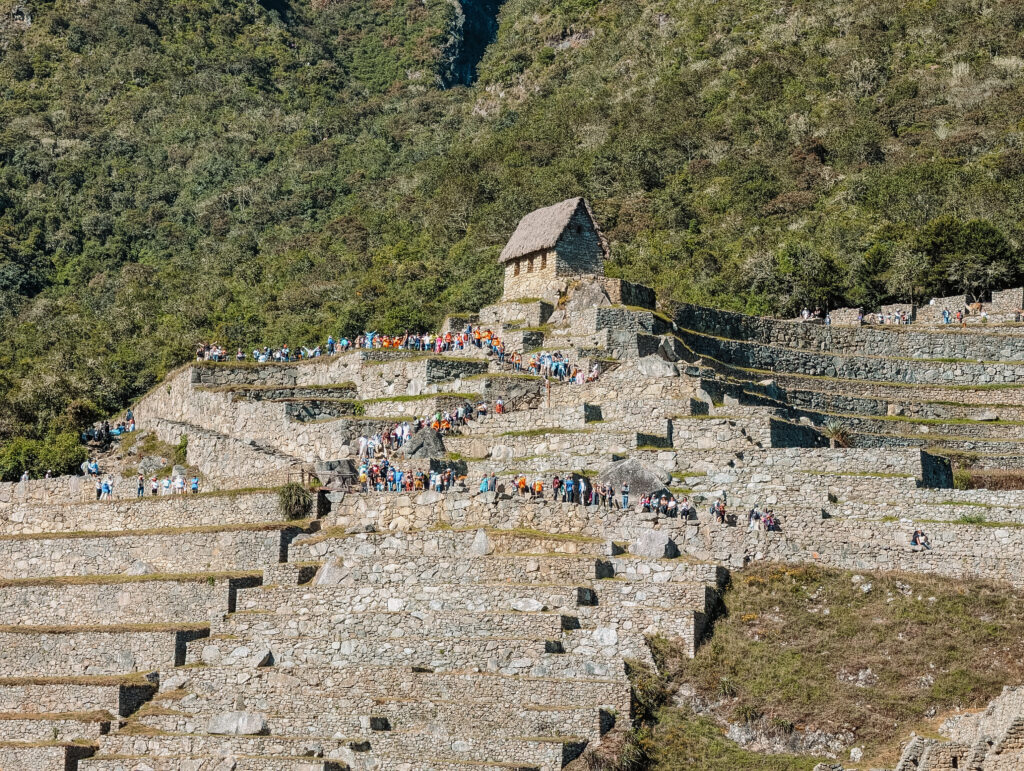
If you reserve a hike to Huana Picchu or Machu Picchu mountain, this is the time that you do that hike. These are not required hikes and are quite challenging due to the steepness of the mountains and the number of stairs that you will climb, but they have great views of this World Wonder and the surrounding mountains. These hikes need to be reserved in advance, especially when traveling during the peak season.
Finally, you end your day with lunch in Aguas Calientes before taking the train to Ollantaytambo and finally a bus back to Cusco. Visiting Machu Pichu in this way is a long day and it may not allow you to fully take in this beautiful destination.
Travel Tip: If you only have one day to visit Machu Picchu on your trip, consider going to Aguas Calientes the night prior and booking a tour that leaves directly from Aguas Calientes. By spending the night in Aguas Calientes, you eliminate much of the morning transportation time and you will get to visit Machu Picchu earlier than the vast majority of tourists.
The 2-Day Short Inca Trail is Worth It!
We opted for the two-day trek to Machu Picchu because we wanted to visit the Sun Gate and hike part of the Inca Trail (which can only be seen on the Classic 4-Day or Short 2-Day treks). This short two-day Inca Trail hike can be done in conjunction with an “alternative hike”, such as the Lares Trek or the Salkantay Trek, or can be done as an experience independent of a larger hike. When visiting Machu Picchu, we suggest doing at least the short two-day Inca Trail because the experience makes Machu Picchu feel even more magical and gives you a richer cultural experience.
Day 1: Inca Trail Experience
Getting to the Inca Trail
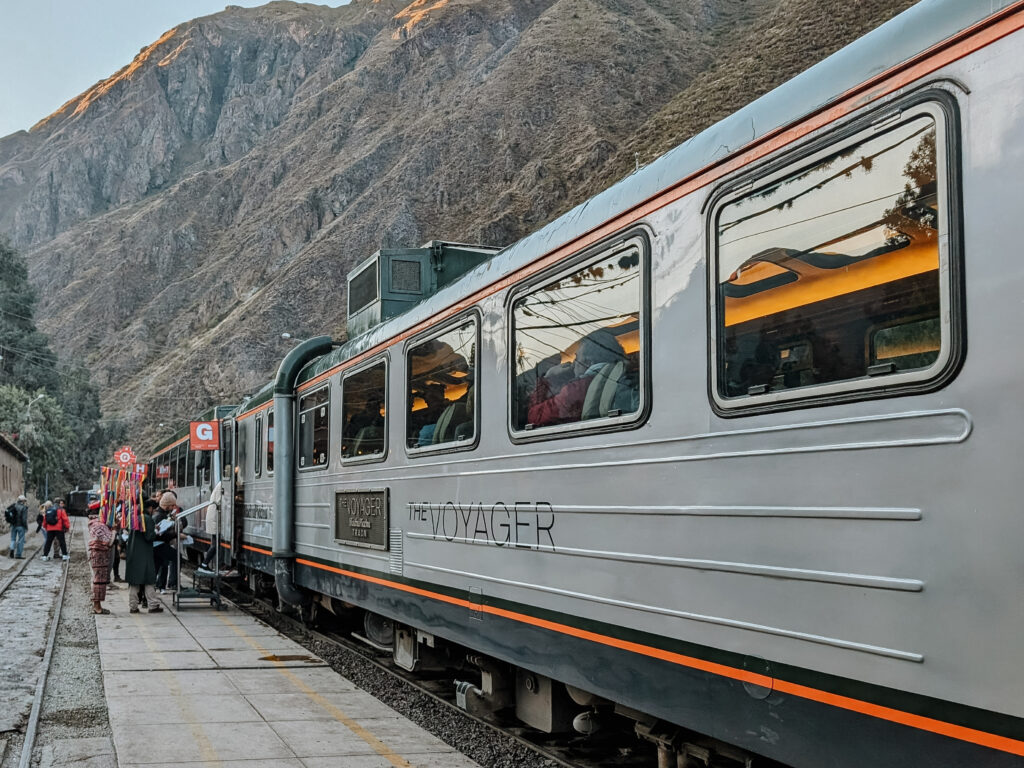
For the two-day trek to Machu Picchu, we started our experience in Ollantaytambo. Those who were only doing the two-day trek and had not previously done the Lares Trek woke up very early and drove from Cusco to Ollantaytambo that morning. Our guide for this part of our experience, Luz Marina, greeted us at our hotel, helped us hand over our duffel bags to our porter, and boarded us on the first train towards Aguas Calientes.
During the train ride, we saw the beautiful landscape between Ollantaytambo and Aguas Calientes. There was also a poetic reenactment of the beautiful love story between an Incan princess and a famous warrior and their forbidden love.
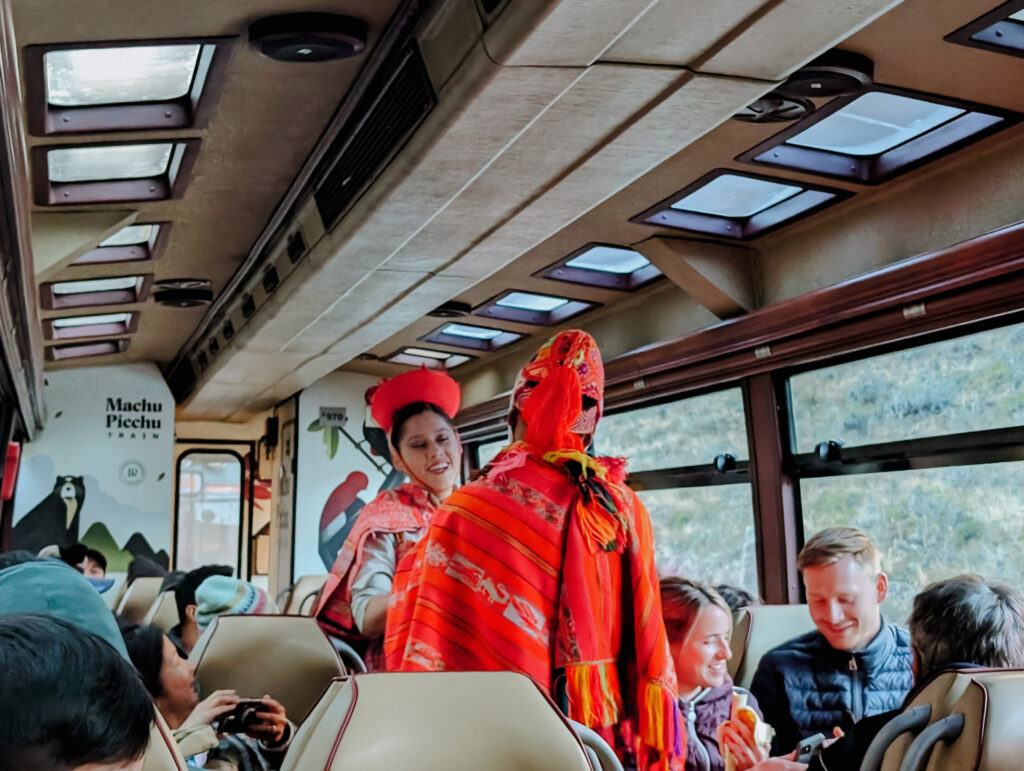
The Archaeological Wonders of the Inca Trail
We got off at Kilometer 104, the stop before Aguas Calientes, where we would start our hike on the Inca Trail. The hike took us up through the jungle forests of the mountains in this region and showed us some incredible views of the surrounding landscape. We were incredibly fortunate to have completely blue skies without a cloud in sight. Our trek started at an elevation of 2,100 meters (6,889 feet) and ended at 2,720 meters (8.923 feet). We made sure to spend over a week at a high elevation to prepare for this hike.
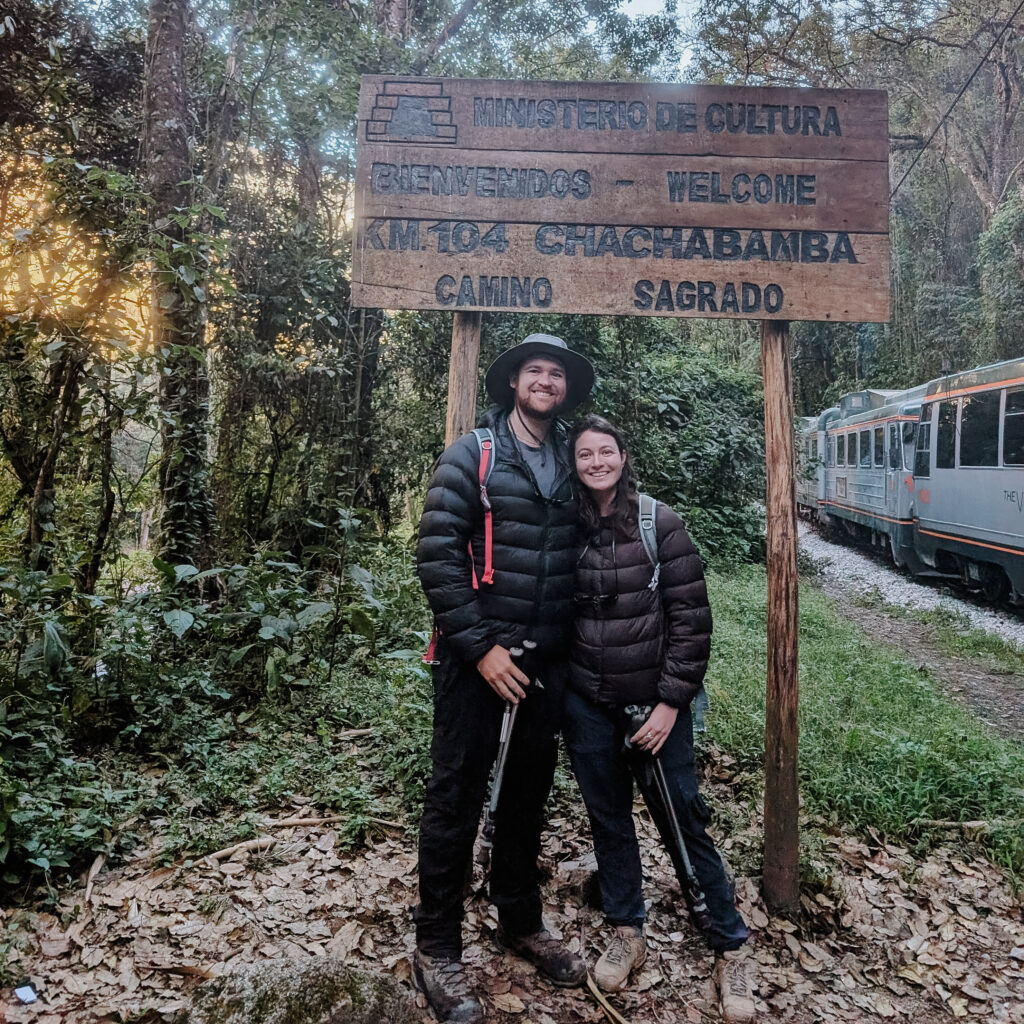
Soon after we started our hike, we reached our first archaeological stop of the day, Chachabamba. Our guide during this trek would also be our historian and she recounted the theories and stories of the different archaeological sites. This ceremonial temple was most likely a religious site for those hiking on the short Inca trail. The entire trail was a religious pilgrimage for those of the Incan time and had numerous archaeological ruins where people would perform ceremonial rituals and rest before arriving at Machu Picchu. It is thought that Chachabamba was tied to water and potentially purification because of the fountains found on the site.
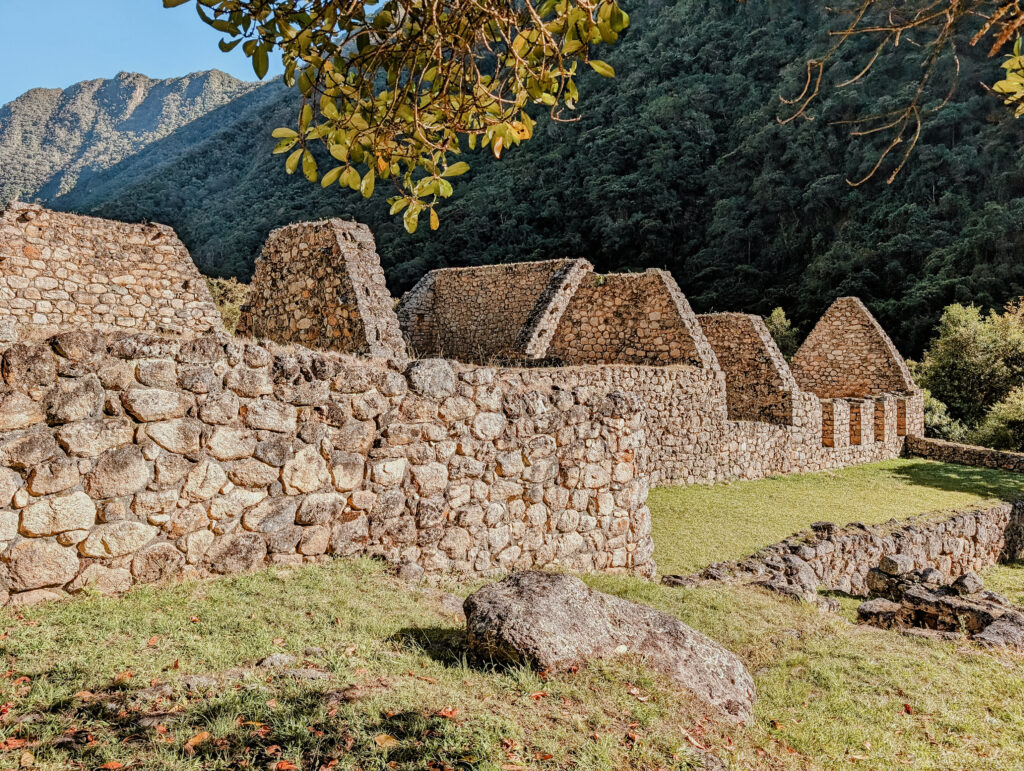
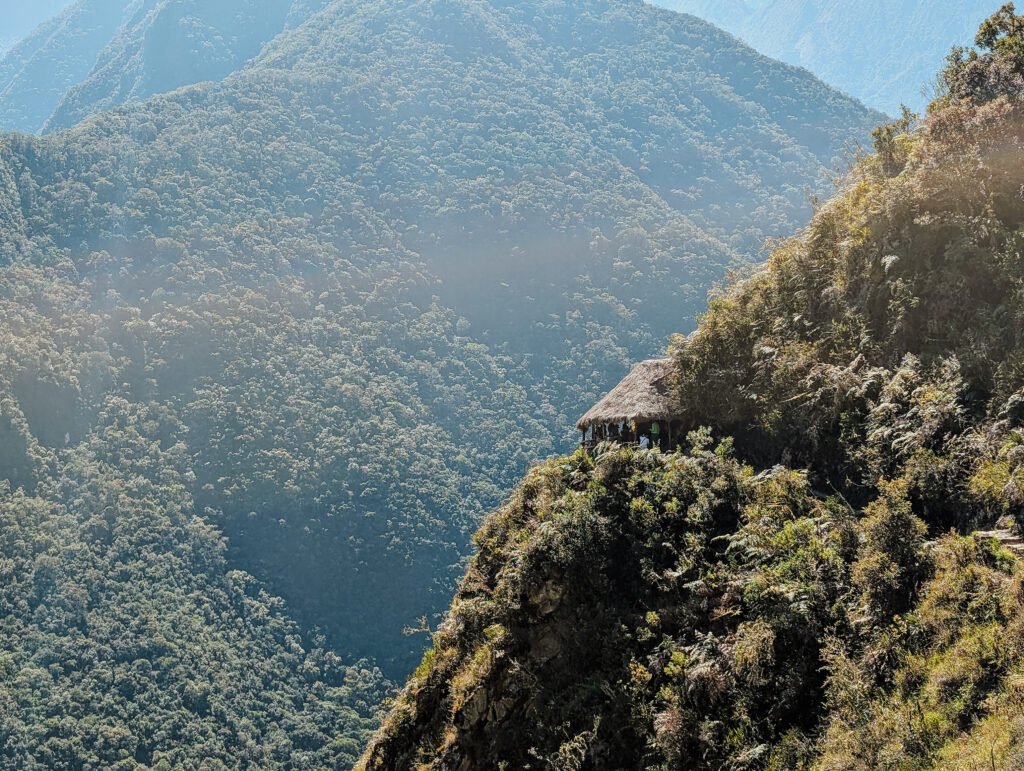
After a few hours of hiking uphill, we reached our second archaeological site of the day, Wiñay Wayna, or mini Machu Picchu. This site is named for the beautiful orchids that are all around this area and means “Forever Young”. It is thought that this site was an agriculture hub to support the people of Machu Picchu due to its great amount of farming terraces in comparison to its few homes. It could also have been an administrative center or a resting destination for those walking the Inca trail. The site also has a set of water fountains that step down from one another and a temple with seven windows to celebrate the seven colors of the rainbow.
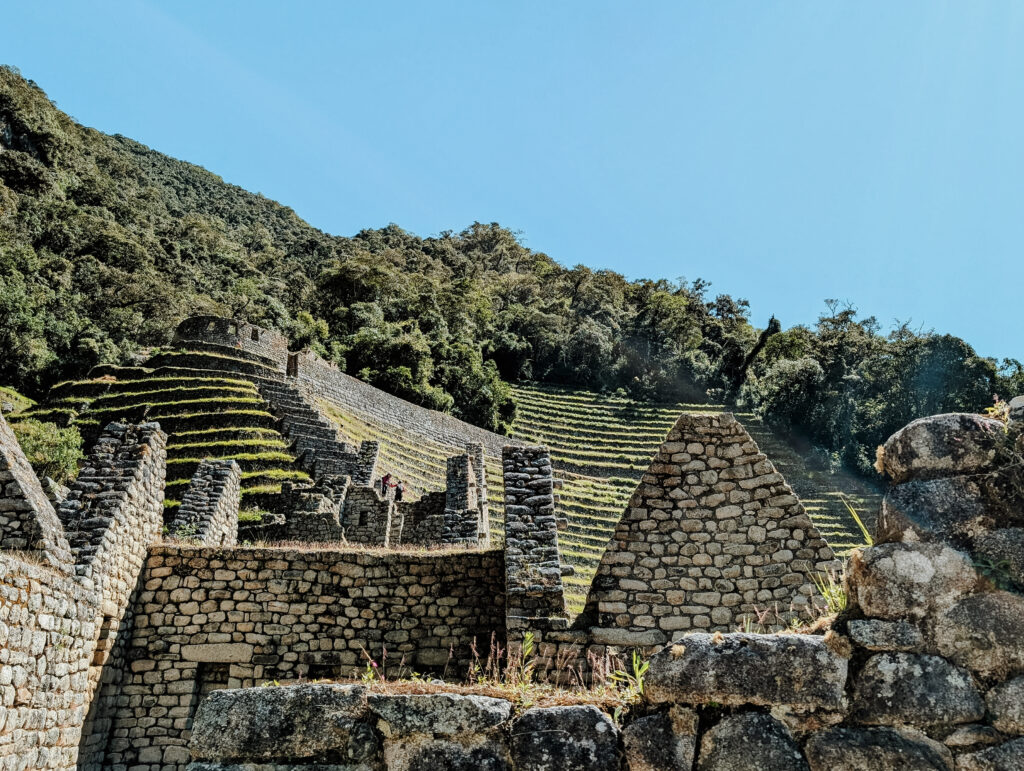
Lunch on the Inca Trail
After visiting the archaeological sites, we arrived at a campsite where we would have lunch prepared for us by the incredible chef team of Alpaca Expeditions. They made sure we had more than enough to eat and we truly never went hungry during the whole experience.
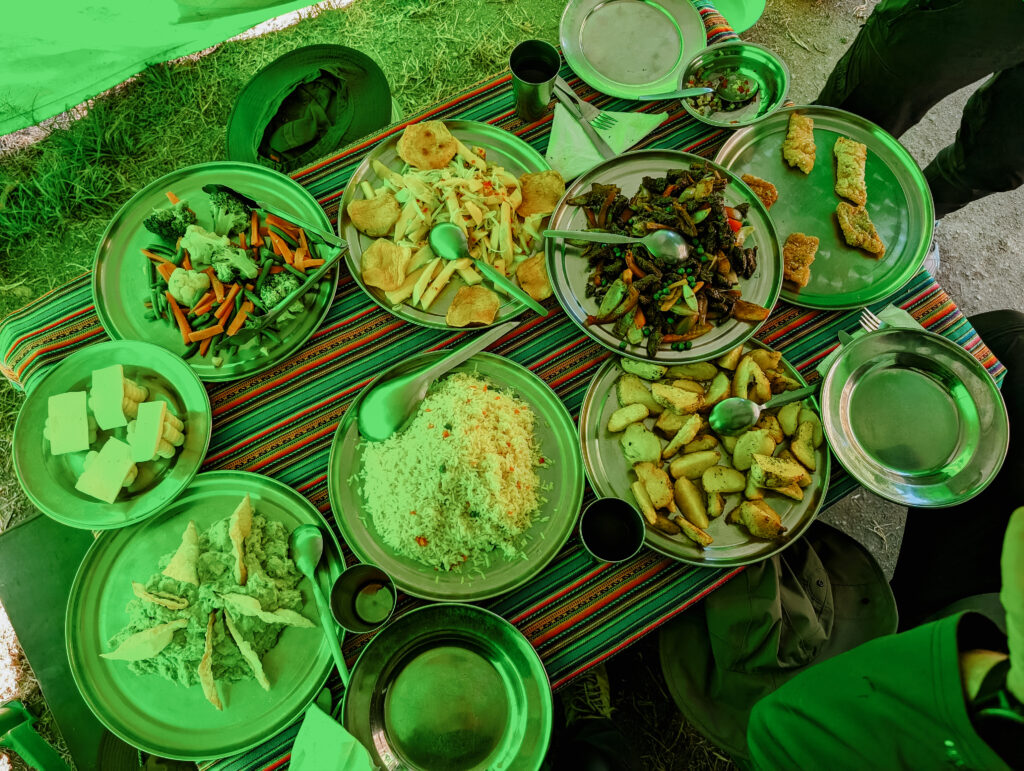
The Final Hike to Machu Picchu
We continued, hiked up the “Gringo Killer” stairs (a set of stairs that is the final challenge for hikers and is often challenging for people who are not fully accustomed to the altitude), and made our way to the Sun Gate, where we could catch our first glimpse of Machu Picchu in the distance. Intipunku, the Sun Gate, was the entrance into Machu Picchu and had a special alignment with the movement of the sun. On the winter solstice, the sun’s rays would align perfectly between the Sun Gate and the Sun Temple that could be found in Machu Picchu. For us, it was our welcome to this magical place.
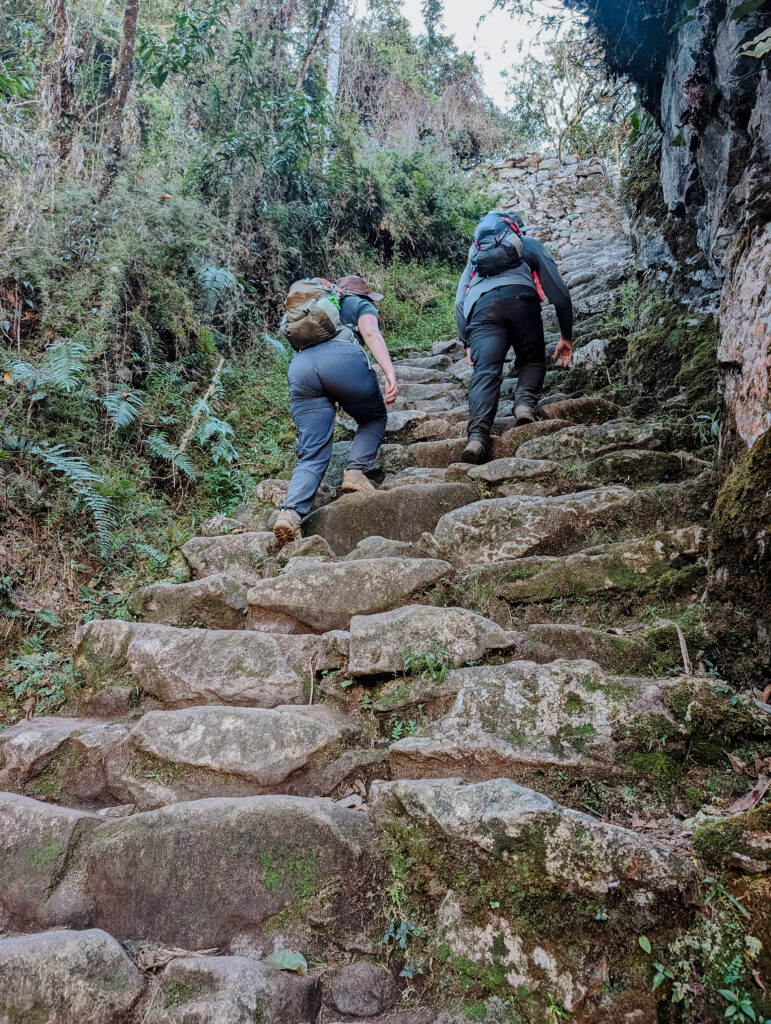
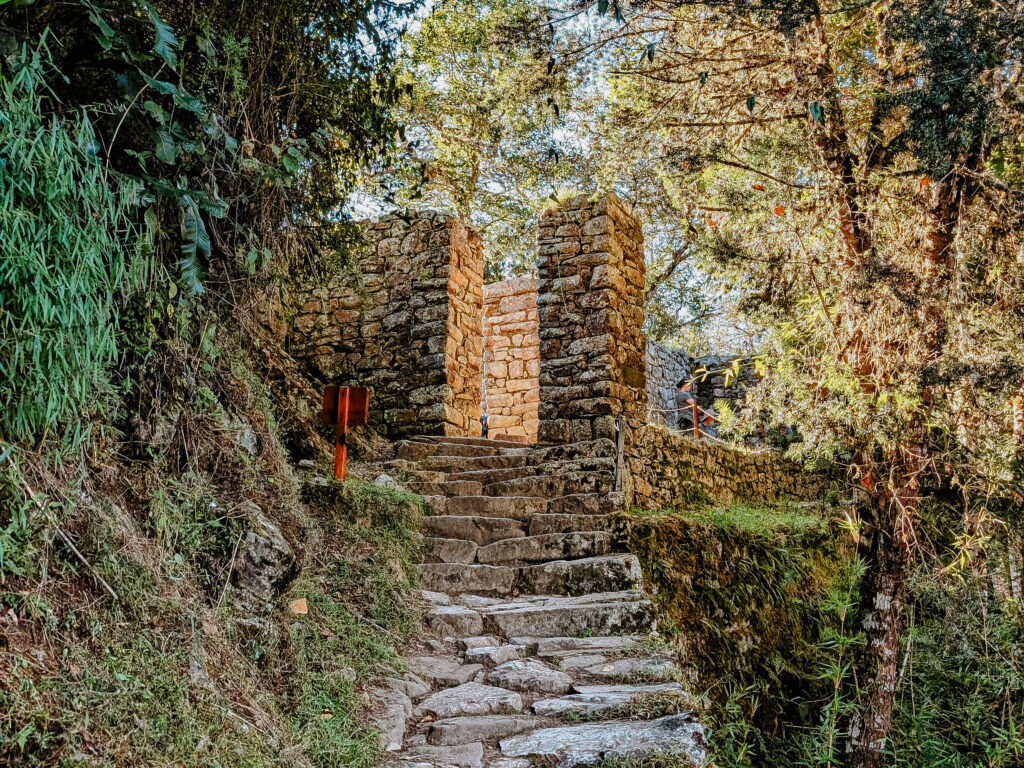
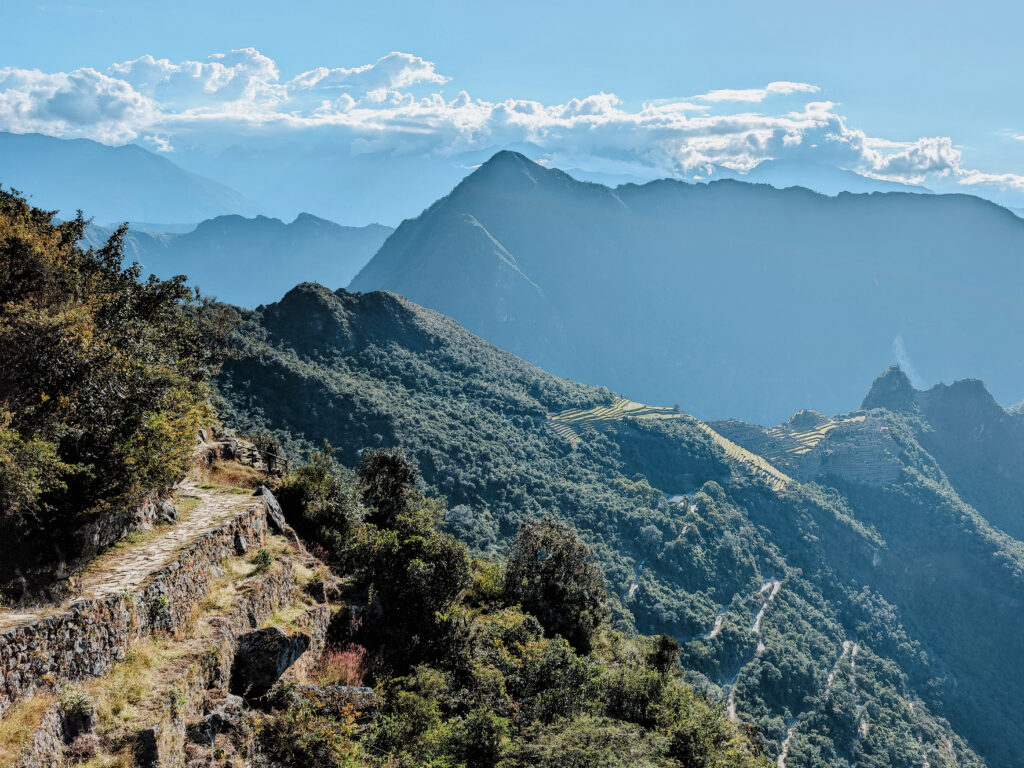
This is where we truly realized the value of this two-day experience. First, only 200 permits are given daily to do the short Inca Trail and it is rarely sold out, which means that there would be very few people on the trail. This is compared to the 500 permits that are given to the four-day classic Inca trail hike which is always sold out and the 5000 daily Machu Picchu visitors. Second, we got to watch the sunset over this World Wonder and the only other people who had this opportunity were those who hiked the short Inca Trail that day as well due to the logistics of all the different hikes and visitors to the site.
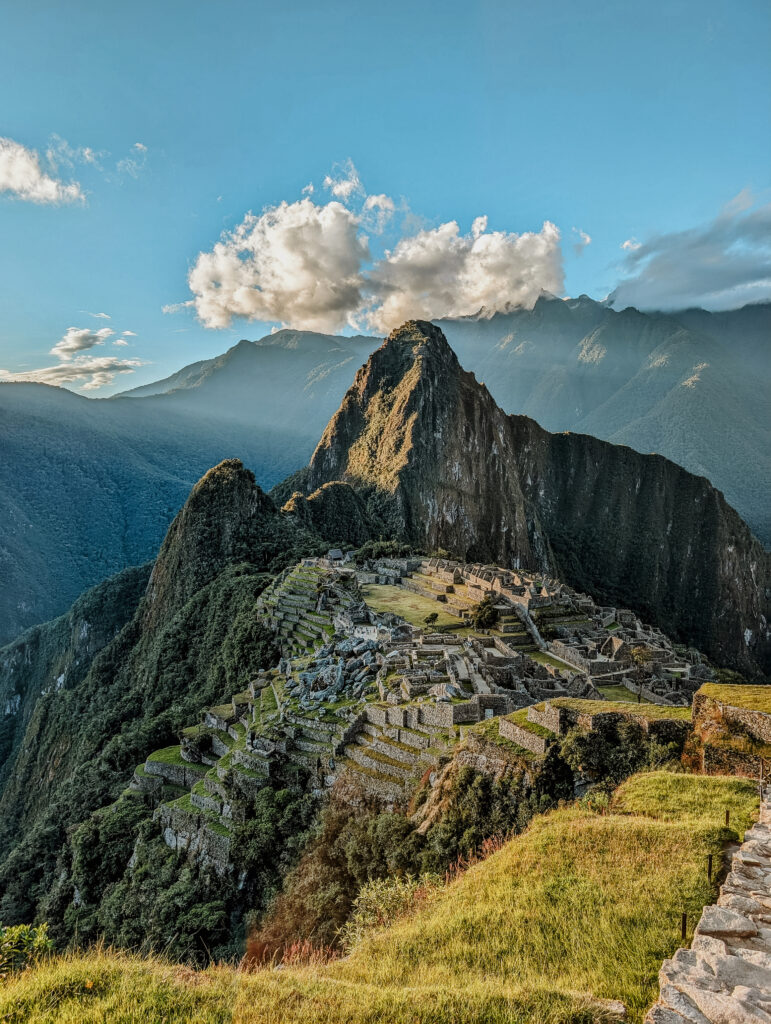
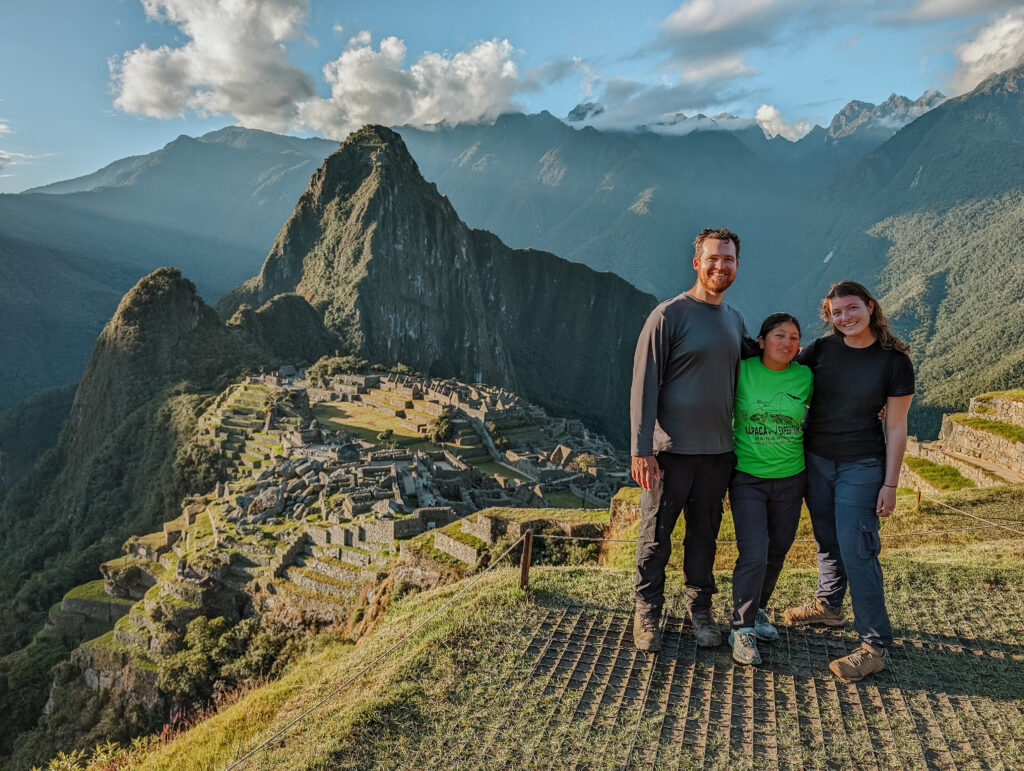
When we arrived at the platform that lies above Machu Picchu, there were no more than 40 people around us and we got to take in the magical destination for the first time. It was a bucket-list dream come true and we were truly so lucky to have the weather that we had.
Finally, we took the bus down from Machu Picchu to Aguas Calientes where we would stay for the evening.
Dinner and Rest
There are two options for where to stay in Aguas Calientes: one option is to stay at a hotel in town and the other is to camp at a local campsite. If we were to do the experience again, we would stay at a hotel due to its proximity to the bus stop in Aguas Calientes.
We were camping for the evening, meaning that we would get more of the delicious food from the Alpaca Expeditions chefs. The campsite is owned by the company itself and the temperature here was fairly pleasant for camping. The campsite also included showers for those who wanted to use them and toilets. When we got to the campsite, we had the chance to get changed and prepare for dinner, which was truly another feast.
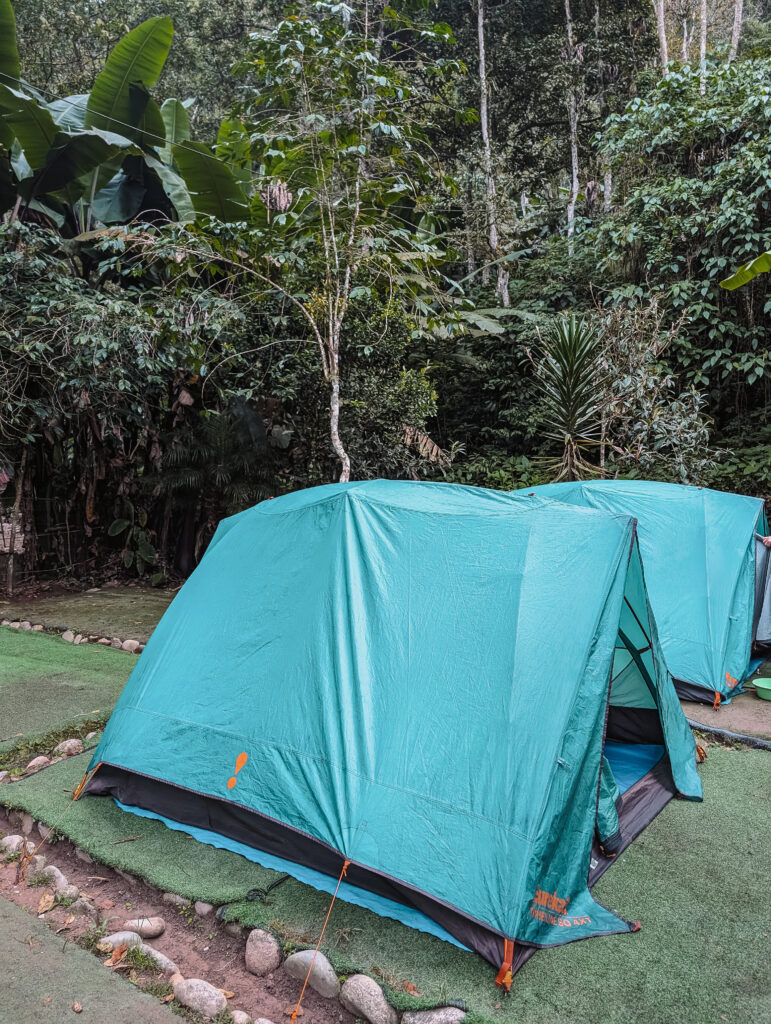
Finally, we got into our tents and sleeping bags, prepared by our porter earlier that day, and got some rest.
Day 2: Machu Picchu Exploration
Breakfast at the Campsite
This morning, we were woken up at 5 AM with a warm tea of coca leaves and some warm water with a towel to take a bird bath before getting dressed for the day. We packed up all our belongings into our duffel bags and emptied our tents to help the porters clear the campsite.
We were served our final delicious breakfast by our chef and had the opportunity to thank the team with kind words and a tip to show our appreciation for how amazing this team truly was. It was rewarding to be able to give support directly to the team that supported us through this amazing experience.
We Made It to Machu Picchu
After breakfast, we continued on our adventure, walking 30 minutes to the bus stop in Aguas Calientes and taking an early bus to reach Machu Picchu before too many tourists arrived. On this day, because we had already seen the site from the platform above Machu Picchu, we started the day by entering the site and exploring the grounds. Our circuit was different from those who visited the site for one day so we did not have too many people or groups in the areas that we were exploring.
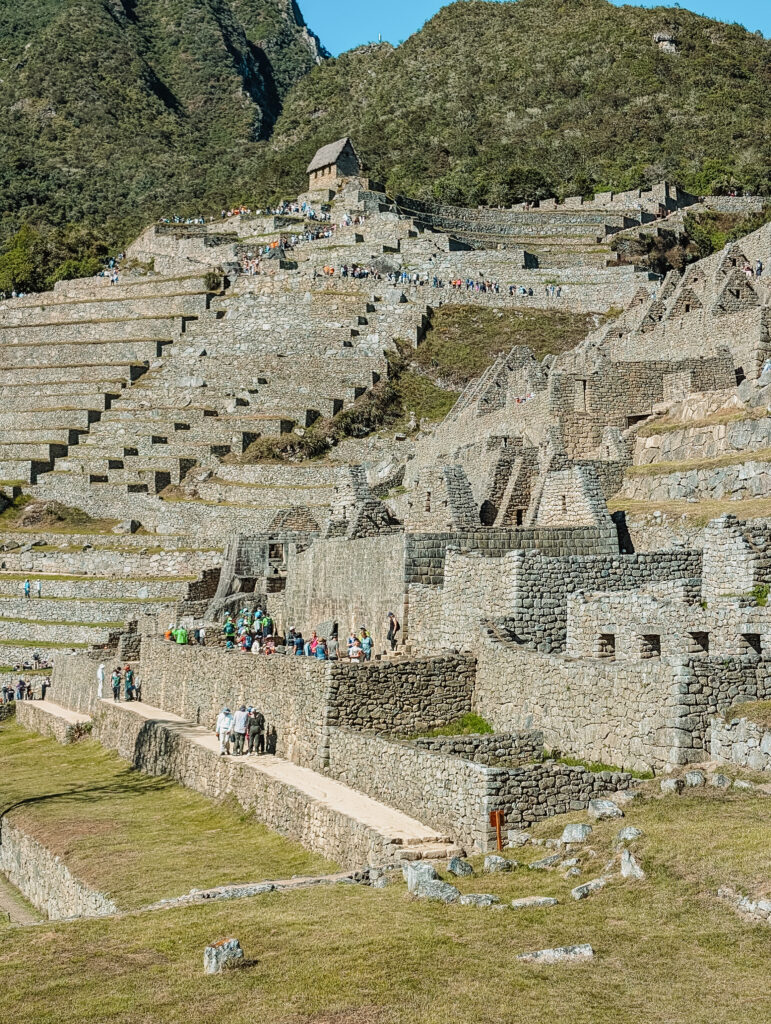
We had the opportunity to walk along a circuit that would take us to the agricultural terraces, the homes of nobility, the homes of the common people, some temples, and more. It was incredible to have the opportunity to be on the grounds of this wonder and absorb the information that Luz Marina was sharing with us.
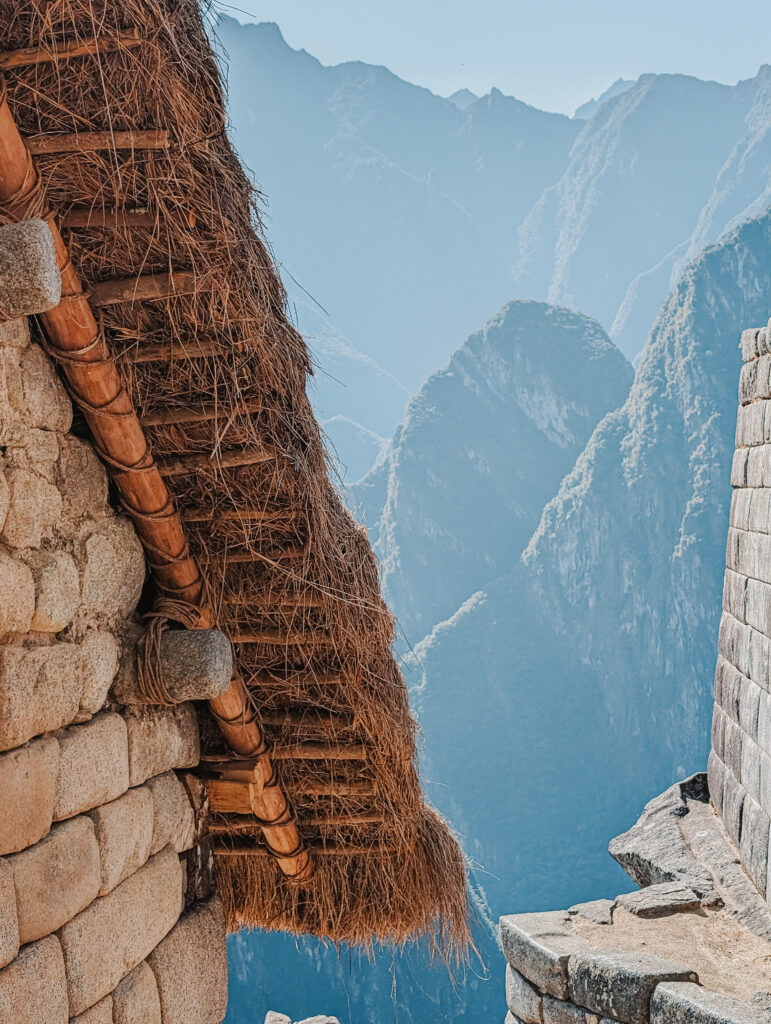
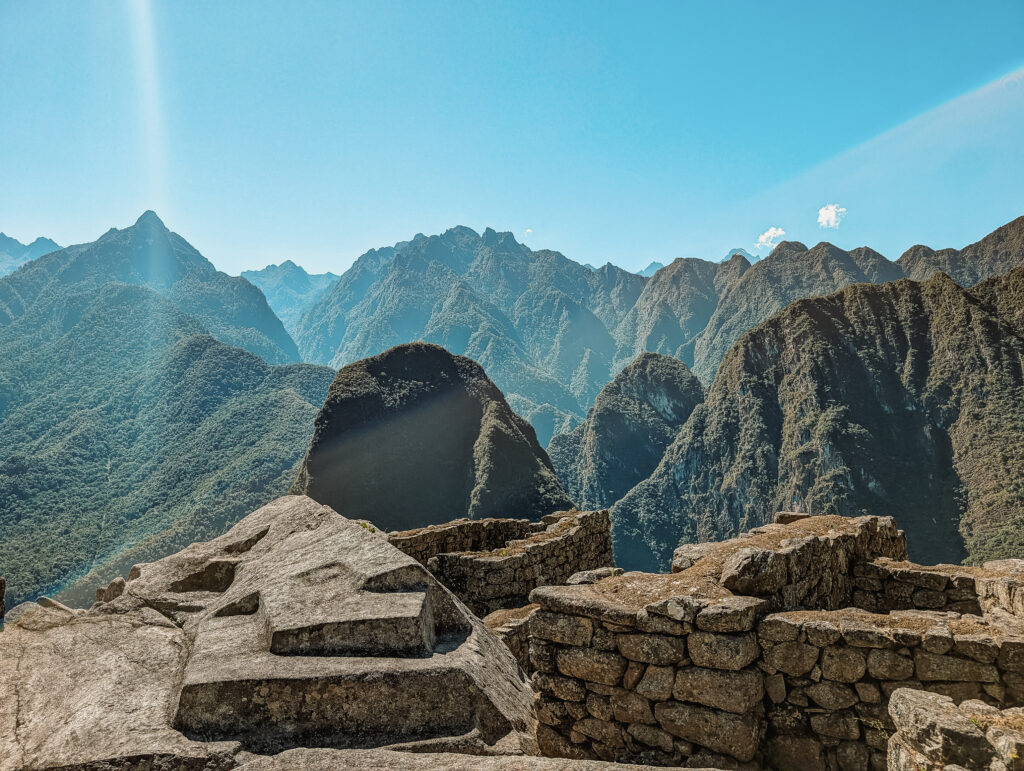
If you reserve a hike to Huana Picchu or Machu Picchu mountain, this is the time that you do that hike. These are not required hikes and are quite challenging due to the steepness of the mountains and the number of stairs you will climb, but they have great views of this World Wonder and the surrounding mountains. These hikes need to be reserved in advance, especially when traveling during the peak season.
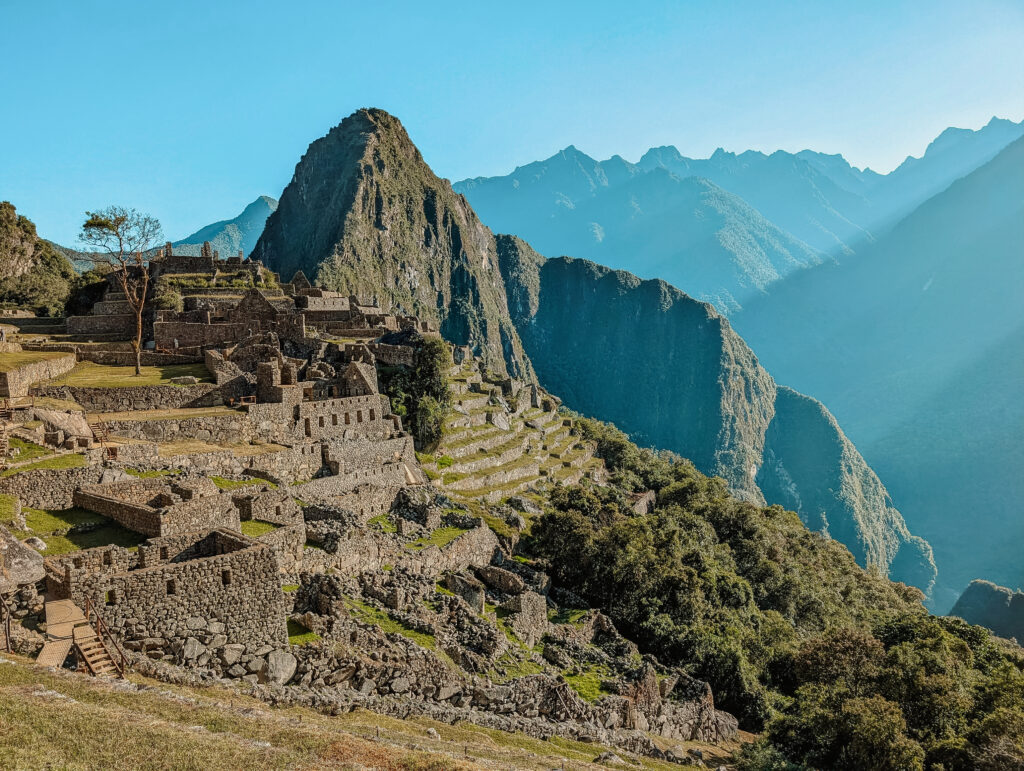
Returning to Cusco
Finally, we ended our day with lunch in Aguas Calientes before taking the train to Ollantaytambo and finally a bus back to Cusco. Here, we had time to get a nice lunch and walk around the town and market to do some final souvenir shopping.
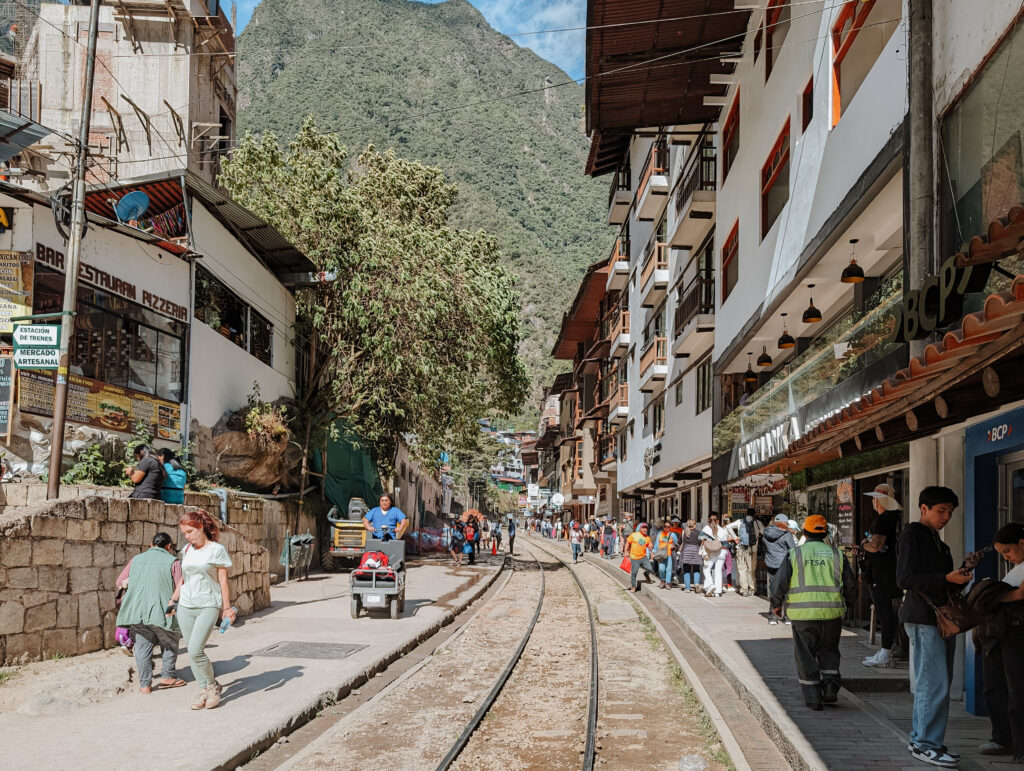
Short Inca Trail FAQs
What is the Short Inca Trail?
The Short Inca Trail is a 2-day/1-night hike and experience to get to Machu Picchu. It includes a one-day hike on the Inca Trail, which gets you to the archaeological site by sunset. Along the hike, you see some other Incan archaeological sites and walk through the incredible mountain jungle landscape. The second day is a detailed tour of Machu Picchu where you can learn about the architecture and culture of this World Wonder.
Where does the Short Inca Trail start and end? How do I get to the start of the Short Inca Trail?
The Short Inca Trail starts at Kilometer 104. To get here, you will take the Machu Picchu Express, which takes people from Ollantaytambo to Aguas Calientes to visit Machu Picchu. You will get off one stop before the final destination and find the trailhead and your guide. The trail ends at Machu Picchu.
How long is the Short Inca Trail?
The trek is approximately 10 kilometers (6.2 miles) long. The hike is completed in just one day. When including all the stops at the different archaeological sites, lunch, and snack breaks, the entire hike takes about 7-8 hours.
Do I need a permit for the Short Inca Trail?
Yes, a permit is required to hike the Short Inca Trail. A limited number of permits are available each day and the permits need to be acquired in advance. The tour agency you use to reserve the trek will get the necessary tickets and permits for you. Because there is a limit to the permits given each day for the Short Inca Trail, you should reserve your trek as soon as you know your travel dates. You can see the availability of Inca Trail permits here.
Is the Short Inca Trail difficult? Do I need to be fit to do the Short Inca Trail?
The trek is considered moderate in difficulty. Some sections are steep and there are some areas with stairs. A moderate fitness level is recommended to do the trek. Even with the fitness level, it is recommended to spend a few days in Cusco or at another location with a high elevation prior to the trek.
What is the altitude of the Short Inca Trail? Is altitude sickness a concern on the Short Inca Trail?
The Short Inca Trail starts at 2,100 meters (6,889 feet) and goes up to 2,720 meters (8,923 feet) at the Sun Gate. It is vital to prepare to avoid altitude sickness.
To prepare for the elevation, you can go to your doctor before your trip and talk to them about what you can do to best adjust to the elevation. There are a few different medications that you can take to help curb the effects of high altitude.
In conjunction with medication, consider the following tips:
- Eat smaller meals when first at elevation. This will help you feel better throughout the day.
- Avoid alcohol. It will decrease your oxygen level and you need as much oxygen as possible at a higher elevation.
- Drink as much water as possible! This will also help with the headaches that may appear due to the altitude.
- If things truly get worse, find a way to get to a lower elevation, and, in the meantime, you can try to get to a clinic or hospital to get some additional oxygen.
It is recommended to adjust to the elevation for about a week before doing any challenging trek. You can consider visiting the following destinations for the week before your hike:
- Uyuni, Bolivia (3,656 m or 11,995 ft) to visit the largest salt flat in the world and some other unique landscapes
- La Paz, Bolivia (3,650 m or 11,975 ft) to see a unique city in the canyon of a mountain
- Cusco, Peru (3,399 meters or 11,152 ft) to learn more about the Incan empire and discover the unique landscape of Peru
Do I need a guide for the Short Inca Trail? What tour agency should I use?
Yes, you need a guide to hike on any part of the Inca Trail. You can read below about the company we used, Alpaca Expeditions, and why we went with them.
Alpaca Expeditions: 100% Peruvian Owned
When looking for a company to go with for this adventure, we chose to partner with Alpaca Expeditions for several reasons. First of all, it was clear that they exceeded the expectations of tourists, having some of the best reviews for a tour agency that we’ve ever seen. More importantly, they are an organization that truly values the people who work for them.
The agency was founded by Raul who, coming from a rural region of Peru, started working as a porter on the Inca trail. With this role, he fell in love with creating an experience for tourists to the region and pivoted his career to start a company that puts the experience of the tourists along with the experience of the employees at the forefront of the operation.
The Incredible Staff
Three different roles help you out when you are on the trails around Machu Picchu (including the Salkantay, Lares, and Classic Inca Trail treks): the guides, the chefs, and the porters. With all of these roles, Alpaca Expeditions is one of the first agencies (if not the first agency) to hire both men and women, empowering women in these communities where they may not have had these opportunities previously.
The guides speak Quechua (the traditional language of the region), Spanish, and English, teaching you about the history, archaeology, flora, fauna, and culture of everything around you. They are trained in first aid, geography, history, architecture, and more!
The chefs travel with the tour group and cook breakfast, lunch, and dinner for the group. The delicious meals are served buffet-style and there is always more than enough food for the group (although no food gets wasted and the leftovers are eaten by the team). We had heard about the meals before going on the trek but it was truly hard to believe the flavorful and nutritious meals we were consuming while hiking. These chefs are true magicians on the trail, even carrying the gear they use and running ahead of us to make sure the meals are ready upon our arrival.
Finally, the porters are the backbone of the entire operation. They carry all the gear needed during the trek, including your clothes, either on their backs or with mules and horses. They set up and take down every campsite and are the background characters making the whole experience incredible.
Beyond the Trekking
Alpaca Expeditions truly values the hard work of these porters. While all of the porters work on the Inca trail, most have never had the opportunity or the means to visit Machu Picchu. Alpaca Expeditions provides a trip for some of their porters and their families to visit Machu Picchu during the off-season as a thank-you for their hard work. They are also provided with all the necessary equipment for their treks, including shoes, shirts, pants (or skirts for women who do not want to break their cultural norms), hats, and other items. There is so much more that Alpaca Expeditions does that is above and beyond the requirements and expectations that other agencies have set and you can read more about that here.
Beyond the internal community that Alpaca Expeditions has created, this company makes sure to give back and elevate the communities around the Sacred Valley and High Andes regions. There is so much information about this on their website but some of the efforts include:
- Ricsishun Nukanchispata (Knowing Ours in Quechua) – a program that brings kids to different archaeological sites and the Rainbow Mountain, along with a guide and chef from Alpaca Expeditions so they can explore and learn about their Incan history, something they did not have access to previously
- Cleaning Campaign – every year, Alpaca Expeditions staff walk the trails and pick up any inorganic trash that they find along the trail
- Reforestation Campaign – Alpaca Expeditions donates and plants 10,000 local trees in the communities to help fight the forest fires and deforestation issues of the region
Click here to reserve your Lares Trek hike with Alpaca Expeditions.
What should I pack for the Short Inca Trail?
If you are staying in a hotel (all of this will go in your day pack):
- 2 shirts (1 can be nicer for when you visit Machu Picchu)
- 1-2 pair of pants (1 for hiking and 1 pair that are nicer for when you visit Machu Picchu – optional)
- 2 underwear
- 2 pairs of socks
- 1 rain jacket
- 1 sun hat
- Passport
- Sunglasses
- Bras
- Bathing suit (if you want to go to the hot springs in Aguas Calientes on your own. Only for those staying in a hotel)
- Sunscreen
- Bug spray
- Toilet paper
- Personal medication
- Small first-aid kit
- Hiking boots
- Water bottle/Camelbak
- Toiletry bag with toothpaste, toothbrush, comb, and other necessities
- Day backpack that is no more than 25 Liters – we rented ours in Cusco
Additional requirements if you are camping (all the clothes and things you don’t need for your hike will go in a duffel bag provided to you):
- 1 down jacket
- 1 wool hat/beanie
- Warm gloves
- Flip flops/sandals
- Headlamp
- Portable battery charger
- Sleeping bag:
- Recommend down sleeping bags for -10C at least (if not renting from your tour agency)
Can I see Machu Picchu on the Short Inca Trail?
Yes, on the first day, you will end your day at Machu Picchu and you will tour the archaeological site on the second day.
Are there bathrooms along the Short Inca Trail?
Yes, there are some facilities at Kilometer 104 where you start the hike, and at Winay Wayna where you will have lunch. You will need to bring some toilet paper for these facilities.
What are the highlights of the Short Inca Trail?
The Short Inca Trail takes you by a few different archaeological sites, including the famous Sun Gate. In the end, you will get to see Machu Picchu at sunset with very few other visitors.
Is there food available on the Short Inca Trail?
Yes, the tour company will provide snacks and meals throughout the trek. You will most likely have to purchase your own lunch in Aguas Calientes after visiting Machu Picchu on the second day, before taking the train back to Ollantaytambo.
Can I climb Huayna Picchu or Machu Picchu Mountain after the Short Inca Trail?
Yes, you can! On day 2, after visiting Machu Picchu, you will be able to climb up Huayna Picchu or Machu Picchu Mountain. If you want to do one of these hikes, you will need to be reserved in advance and permits may run out. These additional hikes are not required and are quite challenging due to the steepness of the mountains and the number of stairs you will climb, but they have great views of Machu Picchu and the surrounding mountains.
When is the best time to do the Short Inca Trail?
While the Short Inca Trail is available year-round (except in February when access to Machu Picchu is closed), it is recommended to visit between April and October during the dry season. If you do choose to visit in the rainy season, you will have fewer crowds, pleasant and warm temperatures, an incredibly green and lush landscape, and some less expensive accommodations. In the rainy season, you risk having an obstructed view of Machu Picchu by the low clouds.
Can I book the Short Inca Trail last minute?
Because of the permit requirements of the Short Inca Trail, it is recommended to reserve the trek in advance. That being said, there may be permits still available at the last minute (unlike the Classic Inca Trail) and you can reserve those if available. You will need to give the agency at least 24-48 hours of notice so they can acquire the appropriate permits and make sure they have sufficient guides, chefs, and porters.
What are the accommodation options on the Short Inca Trail?
There are two accommodation options on the Short Inca Trail when reserving with Alpaca Expeditions. The most common option (and the option that is available with other tour agencies) is to spend the evening in a hotel in Aguas Calientes. With this option, you will get dinner at a hotel in town. The second option is to camp at a site owned by Alpaca Expeditions. With this option, you will get dinner provided to you by the incredible Alpaca Expeditions chefs.
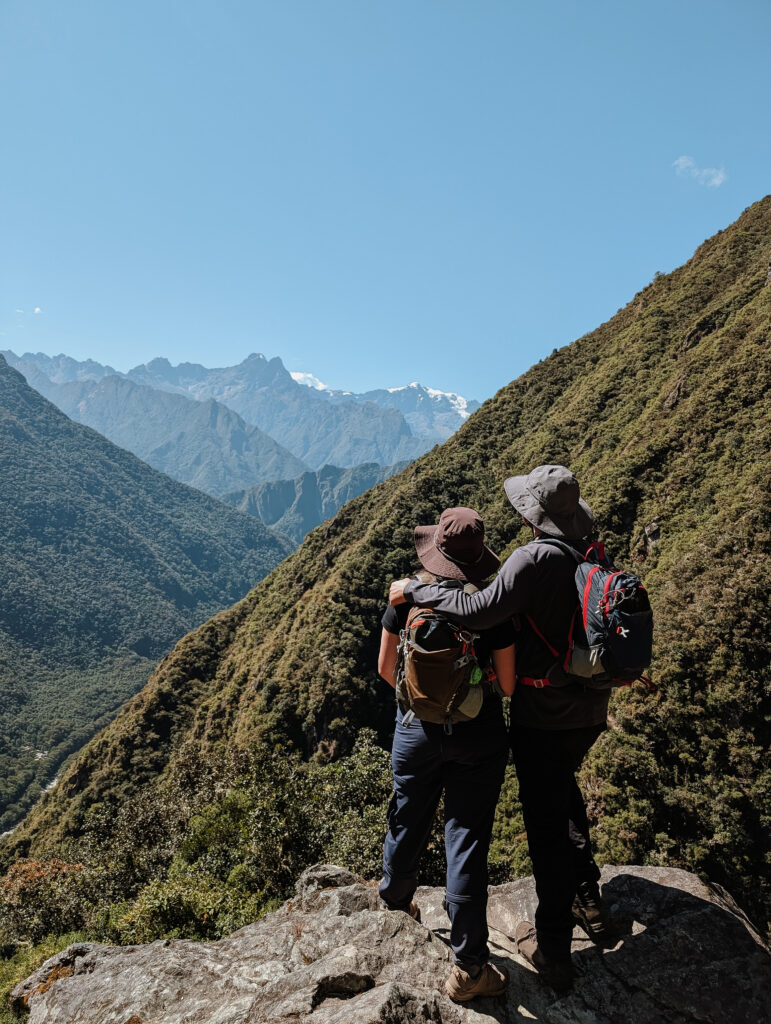
Feel free to reach out to us on our Instagram if you have any additional questions about the Short Inca Trail.
How to Follow Our Travel:
We are actively posting on Instagram with more candid stories and updates about our travel.
If you want to get a weekly email of our latest blog postings, sign up below!
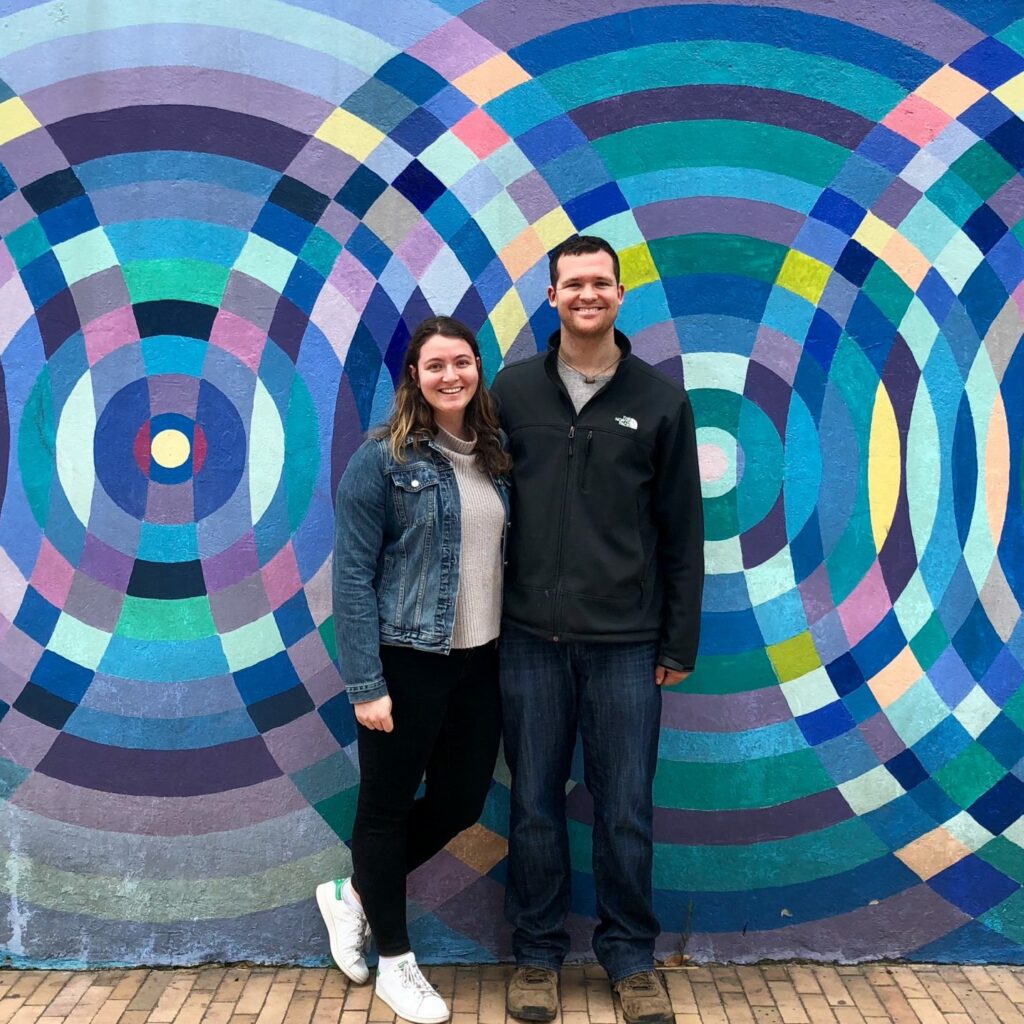
Hi! We Are Kevin and Melina!
We are Kevin and Melina, two avid travelers who have decided to take our hobby of traveling into our new lifestyle.
Follow along as we show you the highs and lows of planning, coordinating, and executing travel to help you make the most of every travel adventure.

